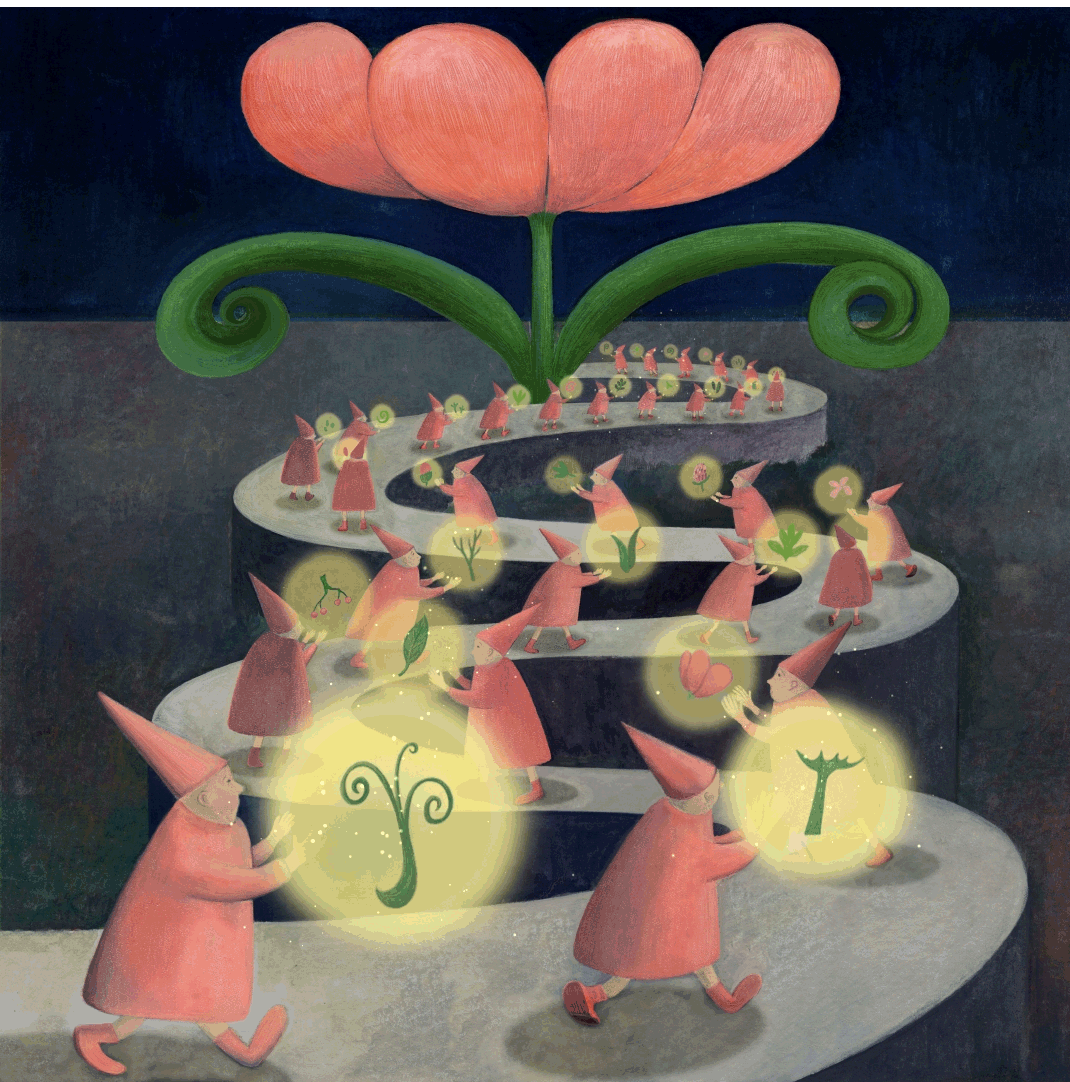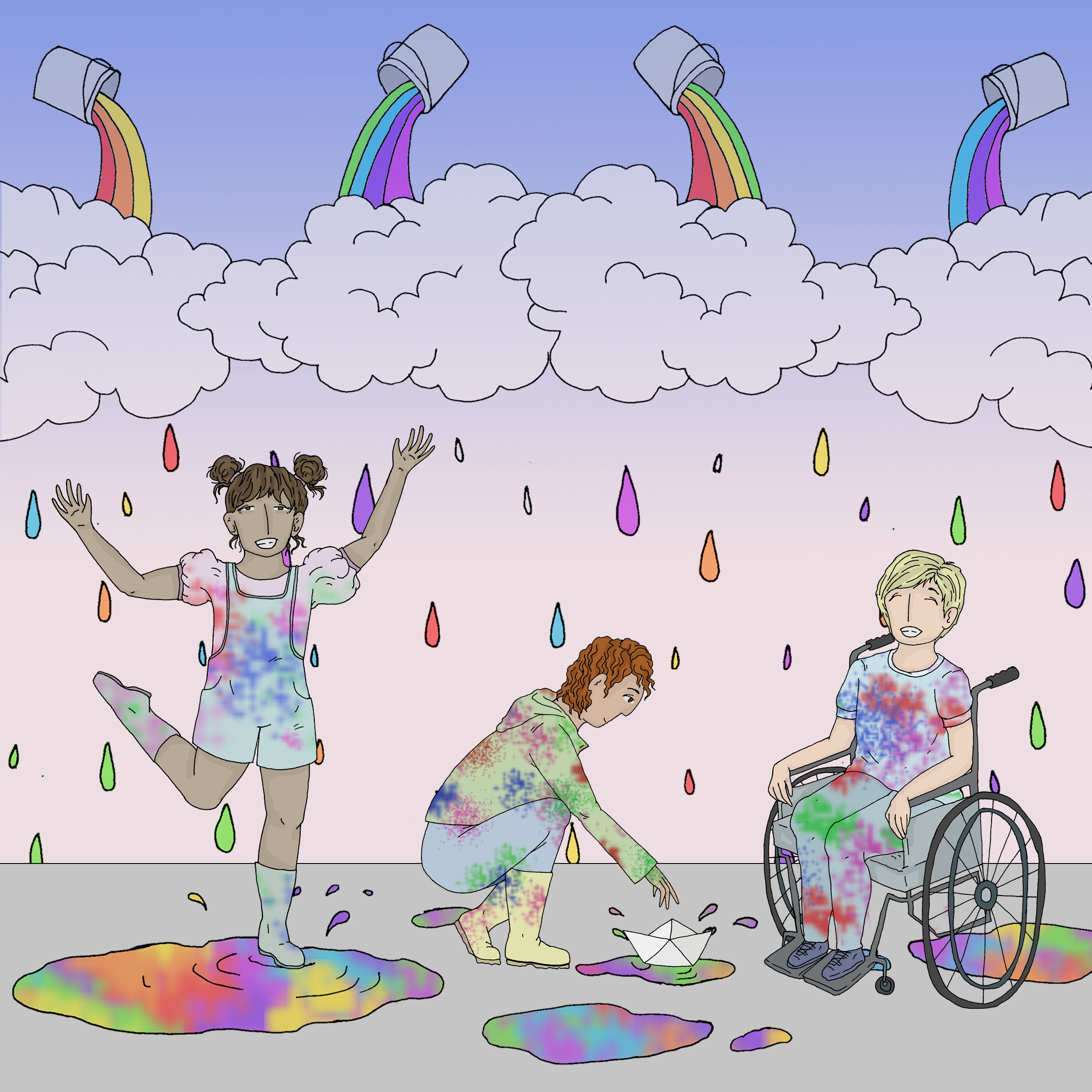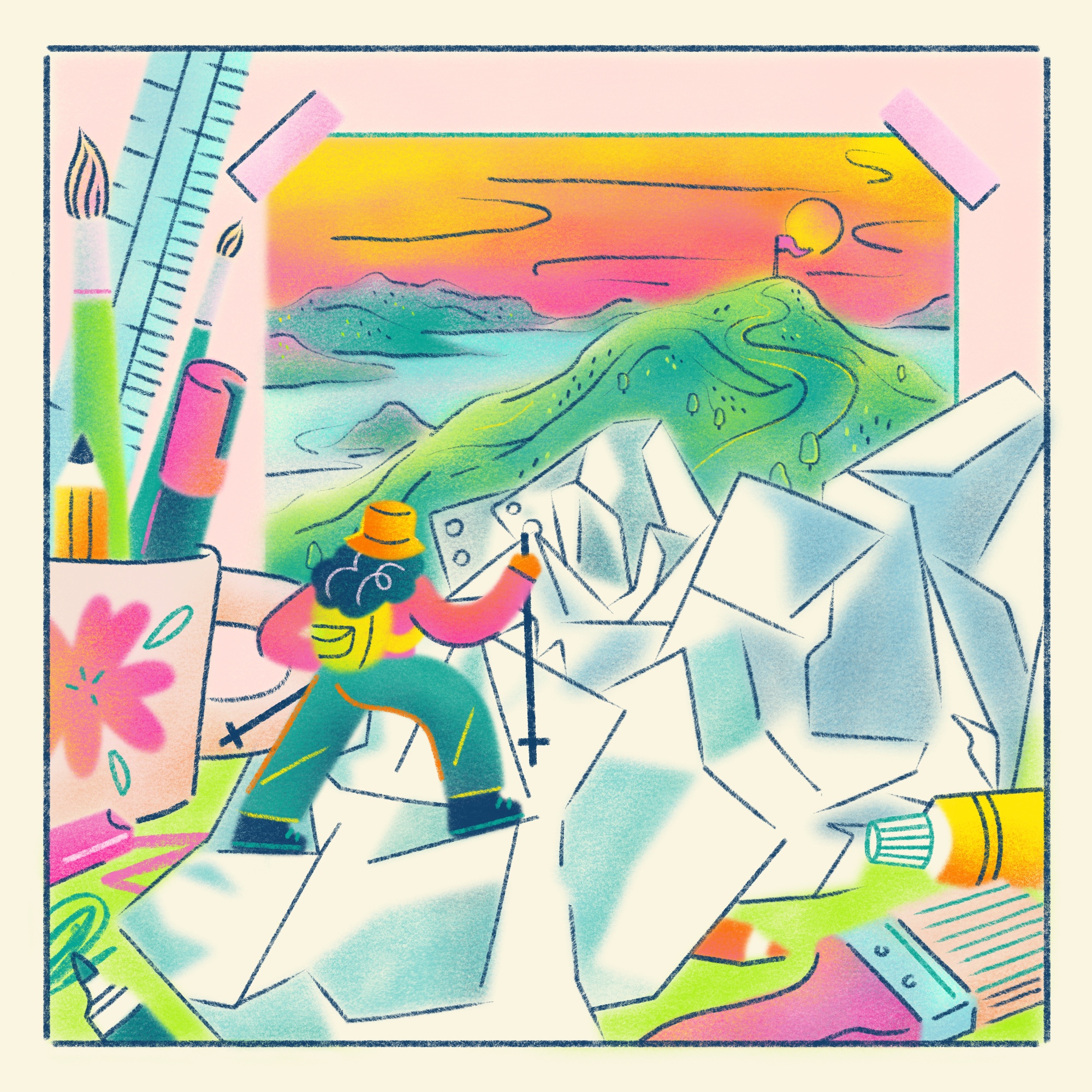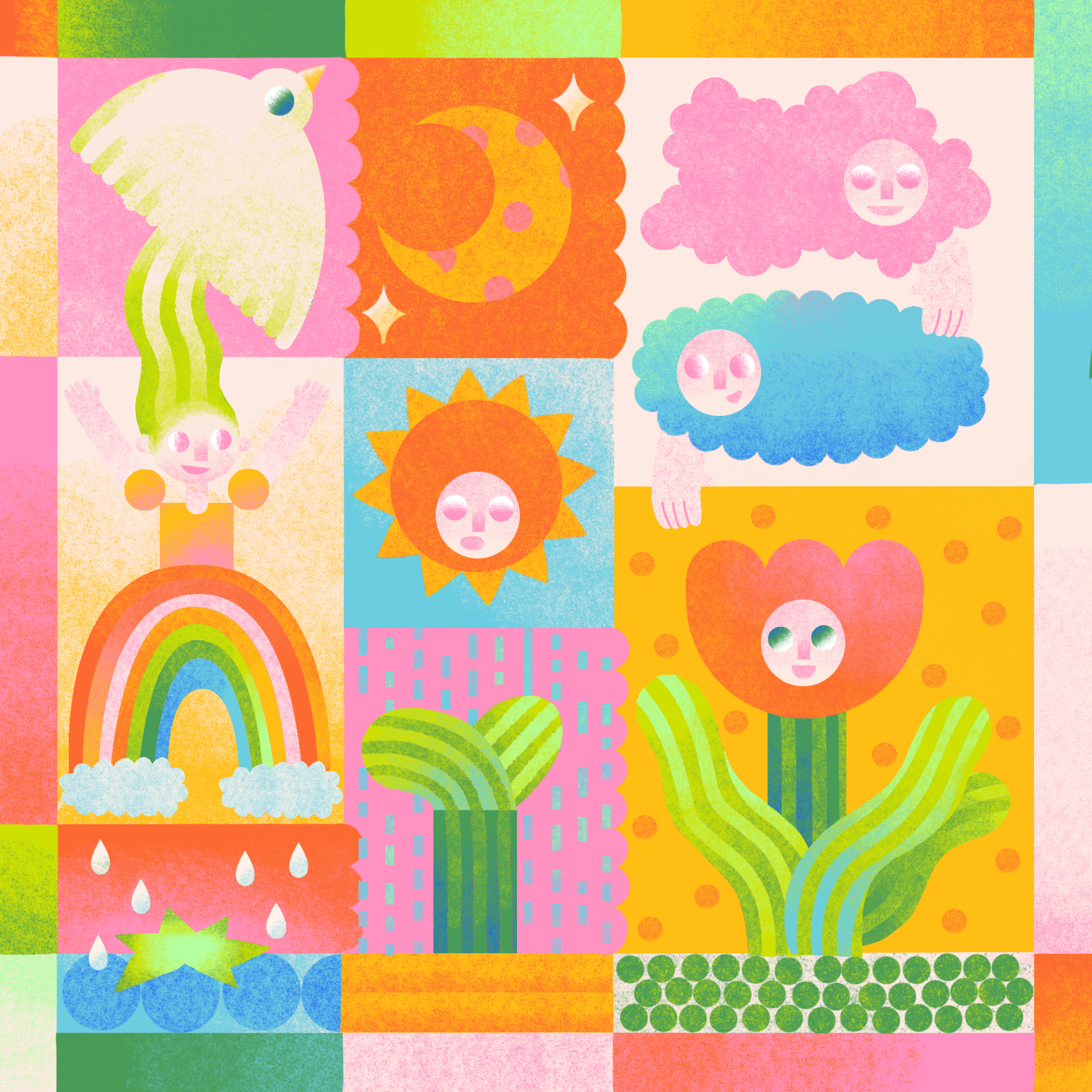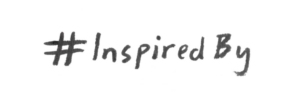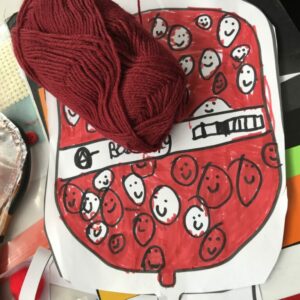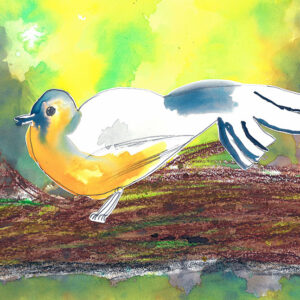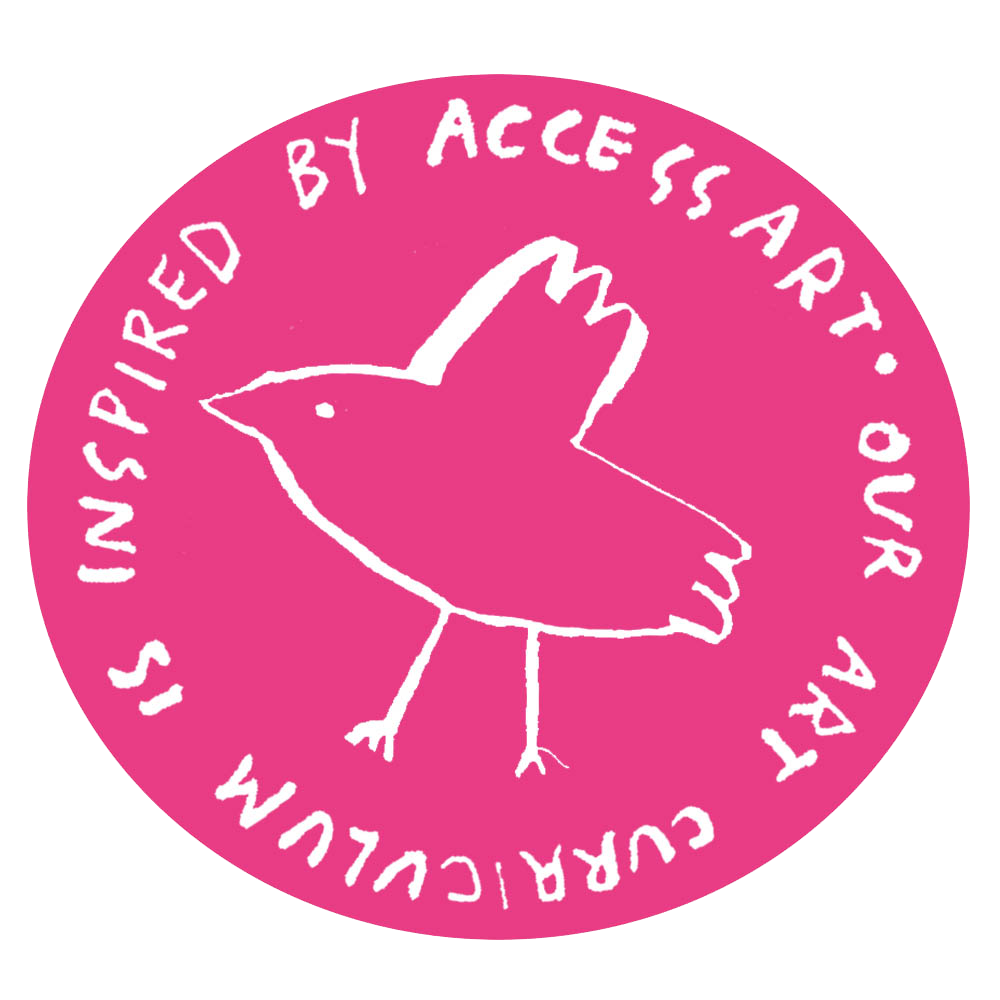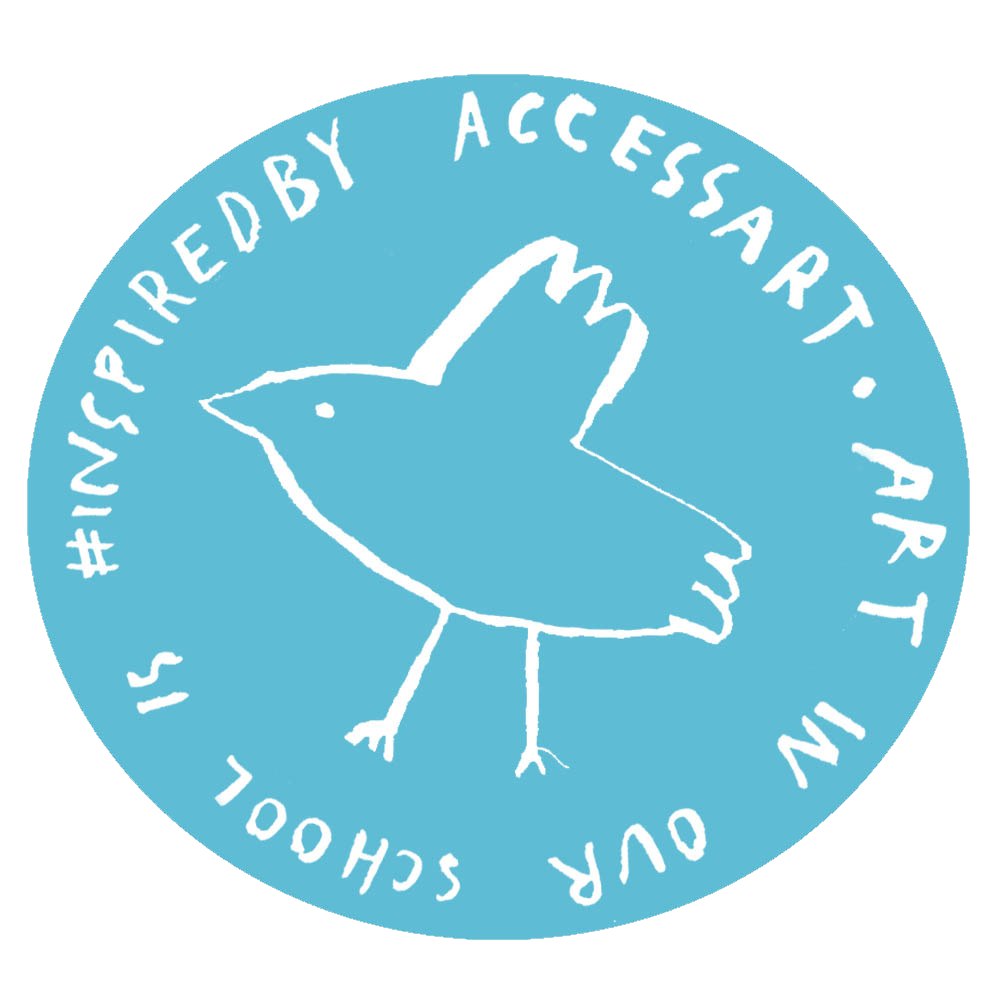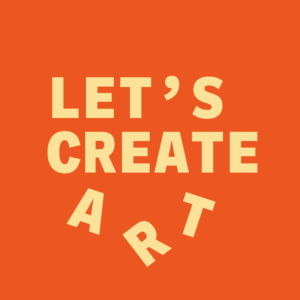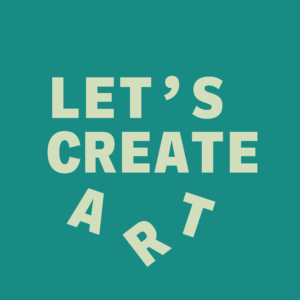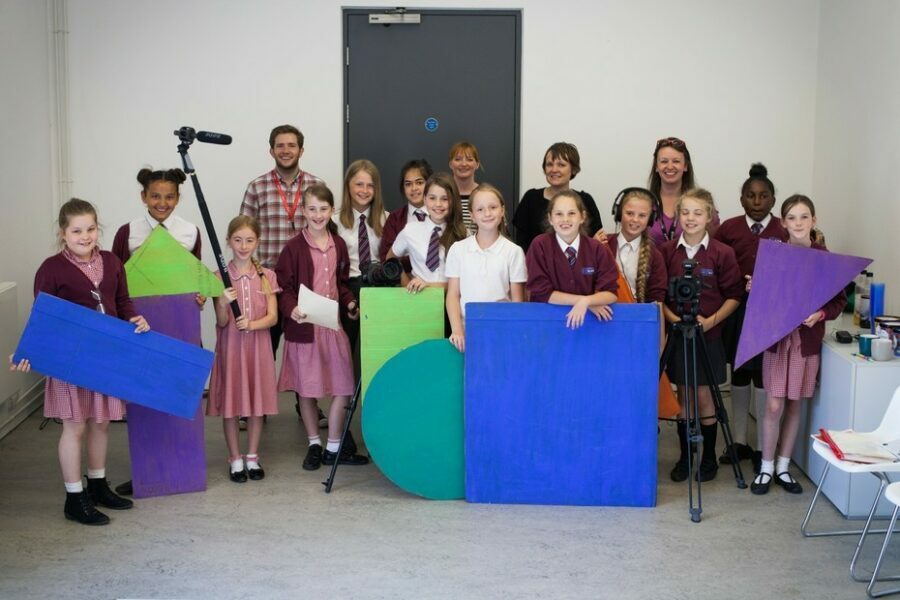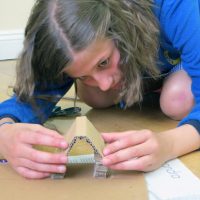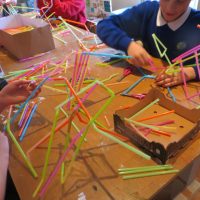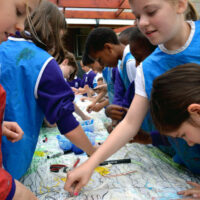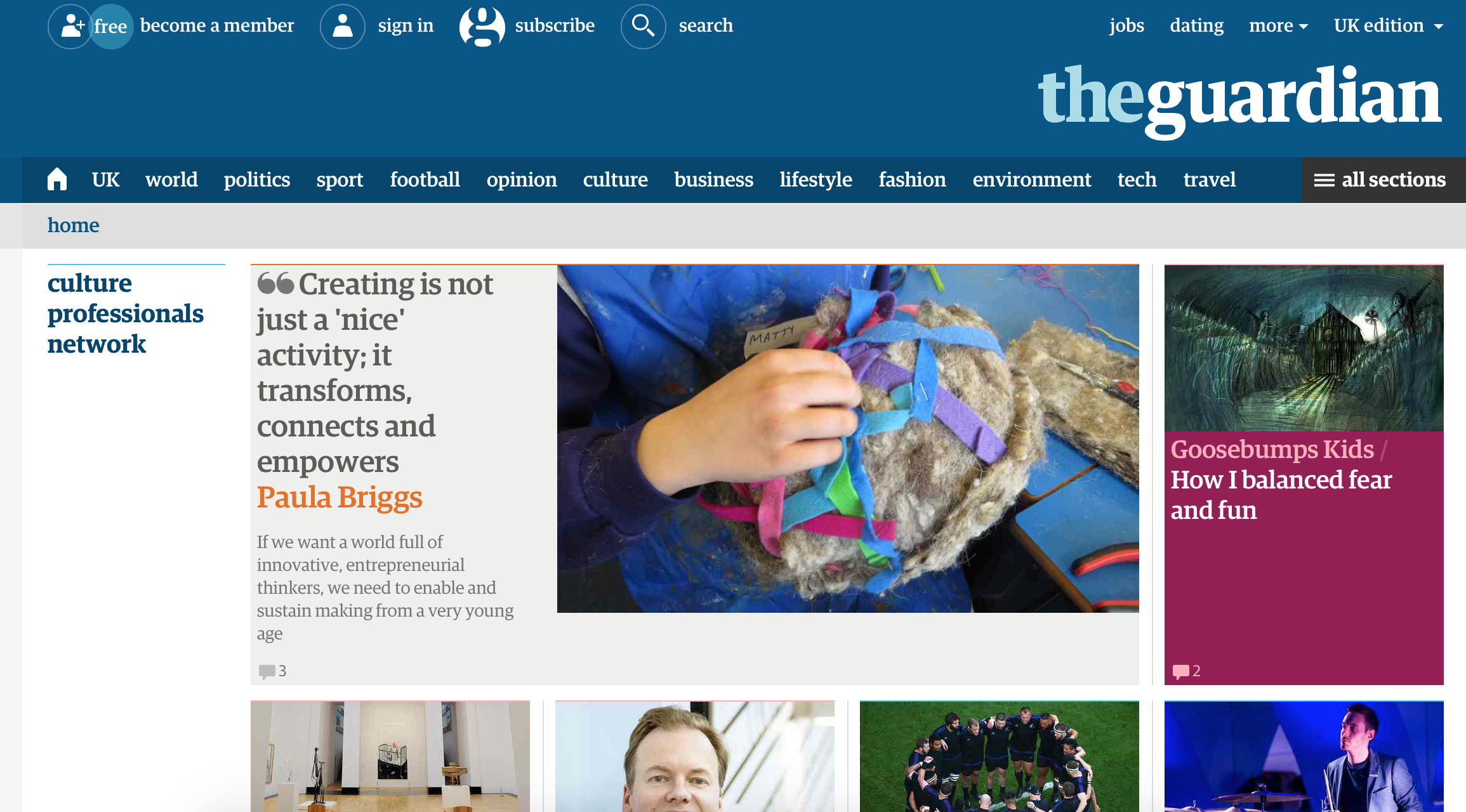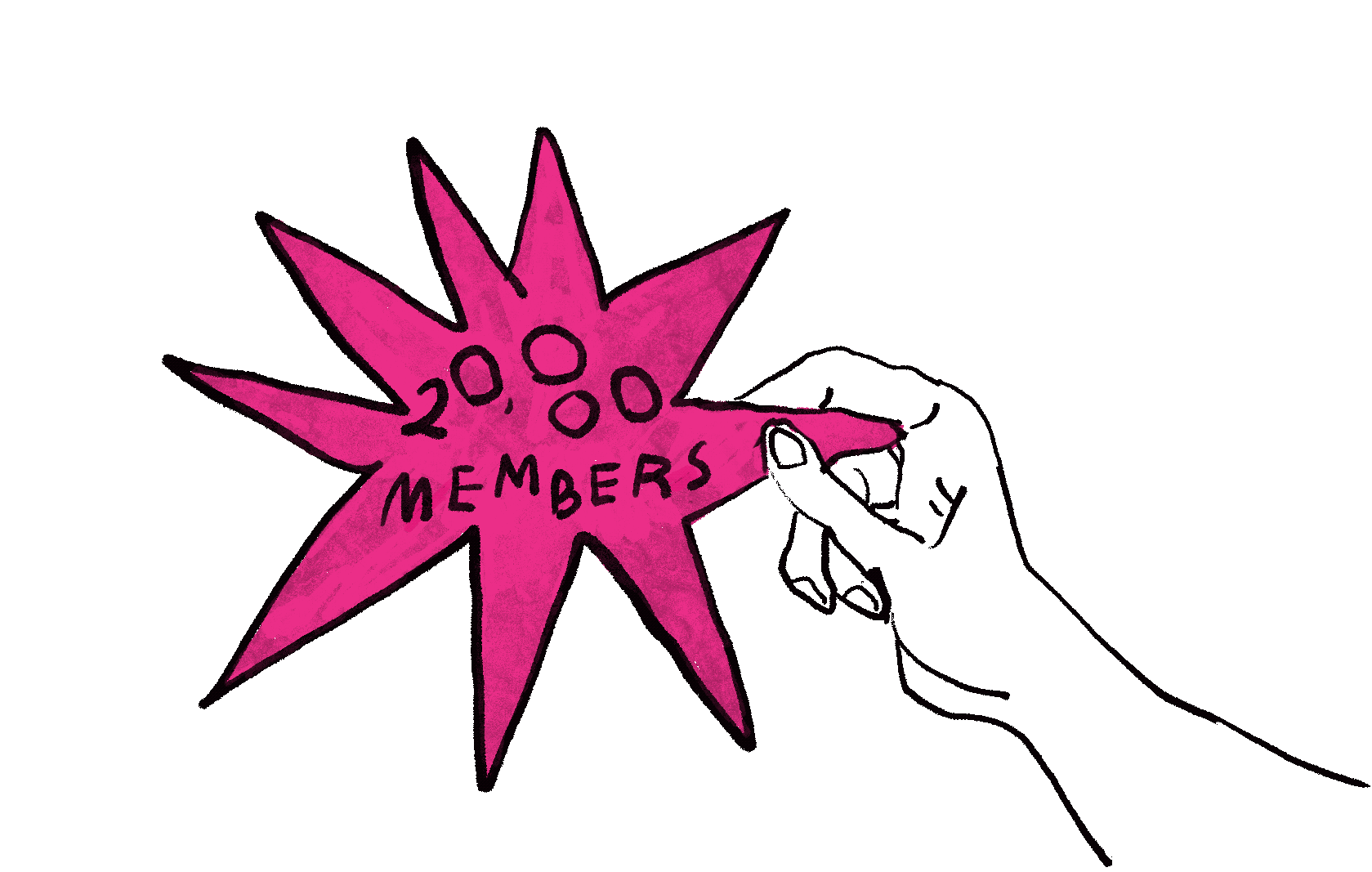
AccessArt Has Over 20,000 Members!
Paula Briggs, CEO & Creative Director
AccessArt Value #3: Having the Confidence to Hold Ideas Lightly, Enables us to Create Space for Everyone to Reach their Potential
AccessArt Core Value #3 “Having the Confidence to Hold Ideas Lightly, Enables us to Create Space for Everyone to Reach their Potential” illustrated by Jagoda Sadowska.
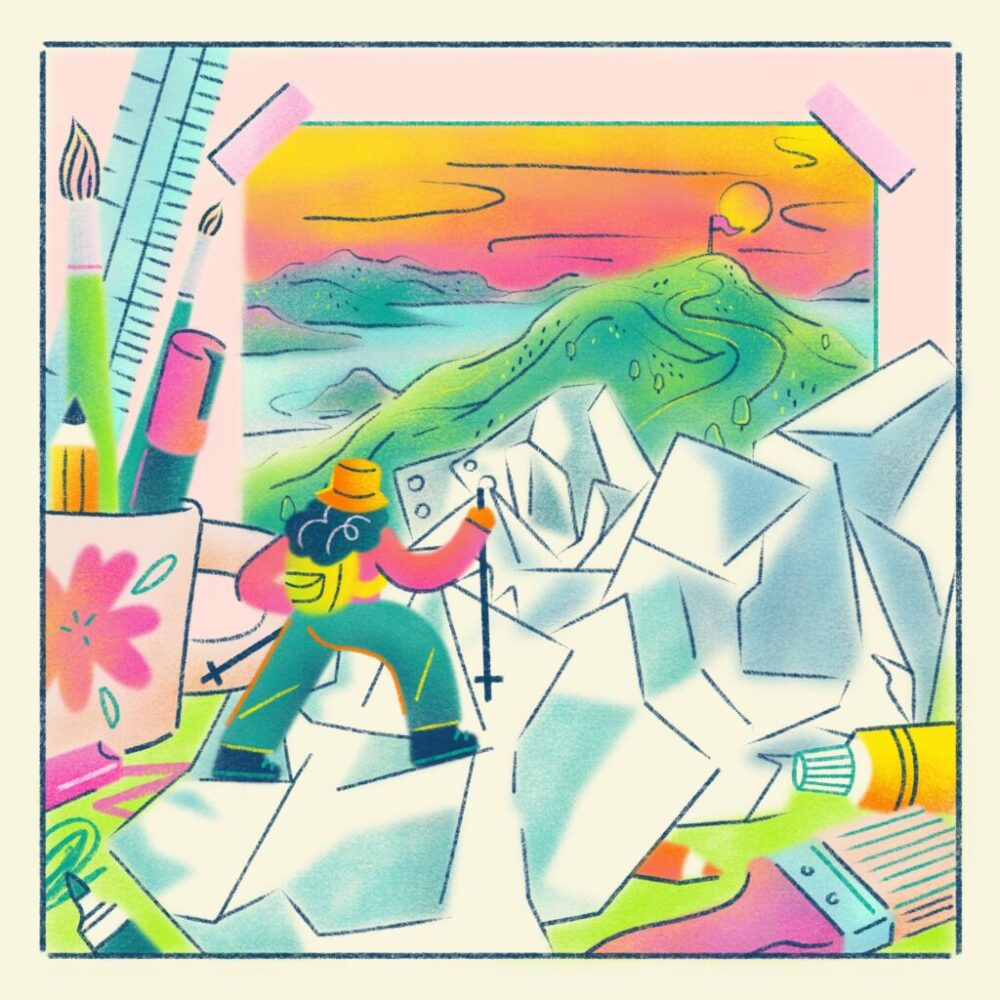
Jagoda is a Polish illustrator and designer based in Glasgow, Scotland. They are a big advocate of joyful colour palettes and a great enthusiast of textures. Jagoda’s work is full of juvenile sense of humour and hopeless romanticism. They enjoy exploring narrative abilities of illustration and tell absurd stories or complex feelings through their work. They find a lot of beauty and inspiration in mundane, day to day life.
At AccessArt we love the colour, energy and humour that Jagoda pours into their work. The playfulness of their artwork brings a real joy to the viewer and we are really excited by the clever way in which Jagoda has communicated the core value ‘Having the confidence to hold ideas lightly, enables us to create space for everyone to reach their potential’.
We feel that this illustration really resonates with the AccessArt core value highlighting that there is importance in giving people the freedom to face the unknown, get lost in their ideas and pave their own path. Existing in a space of ‘not knowing’ and finding your own way will result in a journey that is authentically yours.
AccessArt Value #3
When we feel threatened, or lack confidence, we have a tendency to hold things tightly. They might be entrenched ideas, beliefs, behaviours – even loved ones – fear of uncertainty keeps us tense, rigid, small.
But the opposite is also true. It’s so much easier to be open and embracing towards others when we ourselves feel at ease. Think power pose – body open, strong, reaching outwards. Taking up as much space as can be taken up at that moment. But remember there is no aggression in power pose – the body is actually exposed and vulnerable, but there is no fear – instead there is courage to be open enough to be strong.
When exploring ideas and practices in art, holding ideas lightly is such a helpful process. When artists make work, they often start from a position of “not knowing” – that is why they make the work – to explore, to find out, to uncover, and they can’t access that journey if they are not willing to hold their thoughts loosely, letting them ravel and unravel.
Through holding lightly, art can help us feel safe in the territory of “not yet knowing” which is a useful place to be, a place which helps us to learn to feel safe in the face of uncertainty.
And when we facilitate that exploration in others, holding ideas and preconceptions lightly allows space for our learners to make ideas their own. Art is all about experiential understanding. As facilitators we can help our audiences grow, and we can hint and tempt and signpost them towards discovery and understanding, but if we can do this by offering rather than telling, then we leave space for the learning to be truly theirs. By growing our own knowledge as facilitators we build our confidence to not be afraid, not be threatened and not hold tightly. We are able to see the teaching of art for what it really is – a service which taps into fulfilling a human need for expression and empathy.
But few of us can thrive when there is too much space. We do need structures to help us think and operate, so the question for facilitators (and for AccessArt) is how do we provide enough structure to help people feel safe, and enough space to help facilitate exploration.
So next time you feel contraction from fear or uncertainty, think about the confidence and openness of power pose. Better still, visualise yourself holding your hand out, palm upwards. What sits on your palm? And how loosely can you hold it?
See all our core values here.
Paula Briggs, April 2023
AccessArt Value #2: Enthusiasm is Infectious and We Can all Play a Role in Fuelling or Stalling the Creative Potential of Others
AccessArt Core Value #2 “Enthusiasm is Infectious and We Can all Play a Role in Fuelling or Stalling the Creative Potential of Others” illustrated by Lizzie Lovejoy.
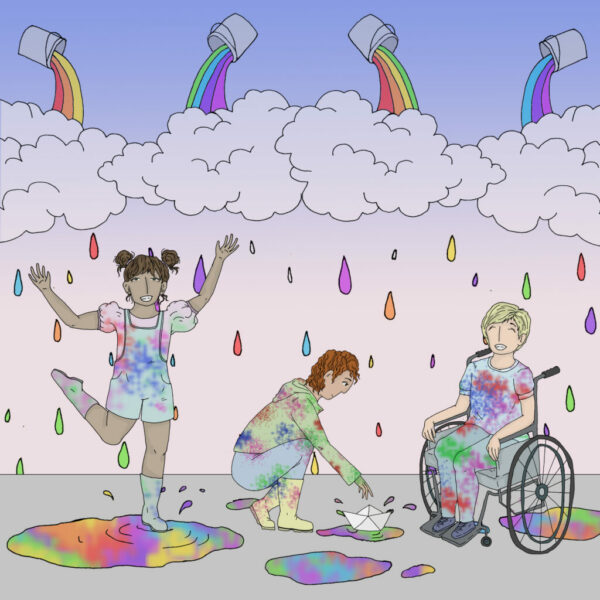
Lizzie Lovejoy is a North East based working-class Poet, Performer and Picture Maker who loves stories. They believe that everyone deserves to experience art and everyone has a tale to tell.
With community and culture being at the core of Lizzie’s work, we felt that they would be a perfect fit to work on the core value ‘Enthusiasm is infection and we can all play a role in fuelling or stalling the creative potential of others’. We love the playful outcome of the illustration, symbolising the enthusiasm, playfulness and creative potential that can be found in all young people, and should be nurtured through the communities around them.
AccessArt Value #2
What is our individual responsibility to those around us? What do we do, to encourage or interrupt positivity? How might we enable a more curious and playful approach?
“85% of the men and women who I interviewed remembered an event in school that was so shaming, it changed how they thought of themselves for the rest of their lives. Fifty percent of that 85% percent, half of those people: those shame wounds were around creativity. So fifty percent of those people have art scars. Have creativity scars.” – Brene Brown, Magic Lessons
The statistic from Brene Brown’s research are staggering but not surprising – we all have examples in our own lives of when we have been “stopped” by an often casual comment by someone about the way we express ourselves. These stray comments about creativity seem to cut straight to the quick. For me, it was when I was eight. Until then I had sung out loud happily enough. But then one day, a boy I was sitting next to in assembly at school asked me why my voice had a weird “lining” to it when I sang (I imagine I was out of tune and merrily unaware). So from that day on – I mimed. Happy to say I’m over it now and singing to my baby daughter proved to me I could hold a tune “enough” and that was all that mattered.
But many of us are stopped before we even get started, and we don’t recover. Luckily the opposite is also true, and we can SO easily be enabled by others, and enable others, by thoughtful, careful approach.
It’s easy to fall into the mindset whereby we wait for things to improve, but there is a greater reality at play: while we actively campaign and patiently wait for things in art education to bloom, we don’t want to let down whole generations by not doing the very best we can do for them now.
So, positivity is important. Not a mindless positivity but an intentional and insightful positivity which makes people around feel safe, supported and carried.
For AccessArt, that means a few things. It means reassuring our users that their heartful instinct is to be followed, even if it doesn’t always chime with the “systems” around us. It means acknowledging overwhelm in the face of inexperience is valid and to be expected, but that there are people around who can support and guide. It means nurturing environments in which learners and educators have a safe space in which to explore their creativity, supported by stepping stones or a framework they can hold on to. And it means lightening up – remembering that as humans we are SO privileged to have access to this thing we call creativity – so let’s be playful and celebratory – and most of all gentle. These are big aims, but they are made real by tiny everyday actions and intentions…
See all our core values here.
AccessArt Primary Art Curriculum FAQ
Pls find frequently asked questions relating to the AccessArt Primary Art Curriculum.
If your question is not answered below pls email the team here.
Getting Started…
-
What makes AccessArt special?
To summarise our offering and AccessArt’s USP:
-
-
All AccessArt resources promote open-ended creative learning. We place great value on the creative journey – understanding that outcomes are generally excellent when each pupil is enabled to explore their own creativity. Our aim is to ensure that by the time they leave school, all pupils understand what it means to enjoy exploring their creativity through the visual arts. See our Step by Step Start up Guide here.
-
We want to nurture aspiration amongst teachers and pupils. Our aim is to help build your understanding of what it means to teach art, so that you can offer your pupils a rich and broad visual arts education. All our resources are created by experts and often in collaboration with other experts in the field. We draw down experience from other settings including art schools, adapting it to show you how to structure activities in inspirational yet effective ways.
-
Although we encourage you to aspire high, it’s important to us that ALL teachers feel able to use our resources. Videos and CPD help support our pathways so that as a teacher you can build your skills (understanding WHY as well as HOW) as pupils build theirs. Members can access free CPD each term and we also record many events which you can watch in your own time www.accessart.org.uk/primary-art-curriculum-introductory-videos-and-recordings/
-
Many schools use us as a scheme www.accessart.org.uk/primary-art-curriculum/ – whilst other schools use our 1500+ resources to supplement and extend their own planning or external scheme. If you use us as a scheme it’s important to note it’s a completely flexible scheme which can be tailored and developed to suit your school.
-
AccessArt has the UK’s collection of visual arts ed resources. Visual arts education is all we do – you will find no other organisation which works the way we do.
-
We are a small team and very responsive and can give email or telephone advice to member schools.
-
Lastly, we are a UK charity and Subject Association. we are not doing this to make a profit. We care deeply about arts education. We have over 18,000 members and keep membership fees as low as possible – making us a very cost effective solution. Membership prices can be found at www.accessart.org.uk/membership-benefits/ .
-
The following videos might also help:
www.accessart.org.uk/introducing-accessart/
www.accessart.org.uk/support-videos-for-the-new-accessart-primary-art-curriculum/
-
-
I am wondering where to start, I would love to see the videos and attend training.
The following are useful starting points:
Starting Out With AccessArt
EYFS
Primary Art Curriculum
Primary Art Curriculum Supporting Documents
Zoom CPD
Pedagogy
-
Do you have a list of learning outcomes which we can use for tracking students’ progress as they move through the curriculum?
You can either take the learning outcomes from the sequencing documents at www.accessart.org.uk/accessart-primary-art-curriculum-disciplines-sequencing-artists/ or via individual pathway Medium Term Plans www.accessart.org.uk/accessart-primary-art-curriculum-medium-term-plans/.
It is important to note that the “I Can” statements found on each pathway are deliberately holistic and go beyond technical skills as we believe this is how art is best taught. You might also like to read posts at www.accessart.org.uk/how-do-we-assess-creativity/ in particular www.accessart.org.uk/what-does-success-look-like/ and www.accessart.org.uk/why-we-need-to-allow-art-to-be-the-unique-subject-it-is/.
-
Do you have a bank of vocab used for each Pathway?
You can find a document of vocab at www.accessart.org.uk/accessart-primary-art-curriculum-key-vocabulary/ (also available via the www.accessart.org.uk/primary-art-curriculum/ main page).
-
Do you provide Knowledge Organisers?
We don’t have knowledge organisers although we have written an article suggesting alternate ways to think about ‘organising’ knowledge in art. www.accessart.org.uk/knowledge-organisers-for-art-in-primary-schools/.
-
Where can I find supporting documents for the curriculum?
You can find all supporting documents here www.accessart.org.uk/primary-art-curriculum-supporting-documents-and-information/.
To summarise our offering and AccessArt’s USP:
-
-
All AccessArt resources promote open-ended creative learning. We place great value on the creative journey – understanding that outcomes are generally excellent when each pupil is enabled to explore their own creativity. Our aim is to ensure that by the time they leave school, all pupils understand what it means to enjoy exploring their creativity through the visual arts. See our Step by Step Start up Guide here.
-
We want to nurture aspiration amongst teachers and pupils. Our aim is to help build your understanding of what it means to teach art, so that you can offer your pupils a rich and broad visual arts education. All our resources are created by experts and often in collaboration with other experts in the field. We draw down experience from other settings including art schools, adapting it to show you how to structure activities in inspirational yet effective ways.
-
Although we encourage you to aspire high, it’s important to us that ALL teachers feel able to use our resources. Videos and CPD help support our pathways so that as a teacher you can build your skills (understanding WHY as well as HOW) as pupils build theirs. Members can access free CPD each term and we also record many events which you can watch in your own time www.accessart.org.uk/primary-art-curriculum-introductory-videos-and-recordings/
-
Many schools use us as a scheme www.accessart.org.uk/primary-art-curriculum/ – whilst other schools use our 1500+ resources to supplement and extend their own planning or external scheme. If you use us as a scheme it’s important to note it’s a completely flexible scheme which can be tailored and developed to suit your school.
-
AccessArt has the UK’s collection of visual arts ed resources. Visual arts education is all we do – you will find no other organisation which works the way we do.
-
We are a small team and very responsive and can give email or telephone advice to member schools.
-
Lastly, we are a UK charity and Subject Association. we are not doing this to make a profit. We care deeply about arts education. We have over 18,000 members and keep membership fees as low as possible – making us a very cost effective solution. Membership prices can be found at www.accessart.org.uk/membership-benefits/ .
-
The following videos might also help:
www.accessart.org.uk/introducing-accessart/
www.accessart.org.uk/support-videos-for-the-new-accessart-primary-art-curriculum/
The following are useful starting points:
Starting Out With AccessArt
EYFS
Primary Art Curriculum
Primary Art Curriculum Supporting Documents
Zoom CPD
Pedagogy
You can either take the learning outcomes from the sequencing documents at www.accessart.org.uk/accessart-primary-art-curriculum-disciplines-sequencing-artists/ or via individual pathway Medium Term Plans www.accessart.org.uk/accessart-primary-art-curriculum-medium-term-plans/.
It is important to note that the “I Can” statements found on each pathway are deliberately holistic and go beyond technical skills as we believe this is how art is best taught. You might also like to read posts at www.accessart.org.uk/how-do-we-assess-creativity/ in particular www.accessart.org.uk/what-does-success-look-like/ and www.accessart.org.uk/why-we-need-to-allow-art-to-be-the-unique-subject-it-is/.
You can find a document of vocab at www.accessart.org.uk/accessart-primary-art-curriculum-key-vocabulary/ (also available via the www.accessart.org.uk/primary-art-curriculum/ main page).
We don’t have knowledge organisers although we have written an article suggesting alternate ways to think about ‘organising’ knowledge in art. www.accessart.org.uk/knowledge-organisers-for-art-in-primary-schools/.
You can find all supporting documents here www.accessart.org.uk/primary-art-curriculum-supporting-documents-and-information/.
The AccessArt Curriculum and Ofsted
-
We need to be clear why we are using your scheme – if Ofsted asks. Can you help?
It’s vital that you choose a scheme which suits your school and that the intent behind our scheme supports/matches your own intent behind teaching art as a school. See our article here.
Pls take a look at the videos below to understand more about the intent/ethos behind AccessArt. If your school does not already have an intent statement, you can use the messages in these videos to inform the creation of one for your school.
-
www.accessart.org.uk/the-philosophy-and-approach-behind-accessart-resources-for-primary-schools/
-
www.accessart.org.uk/support-videos-for-the-new-accessart-primary-art-curriculum/ (we recommend watching the first 9 videos – the first four are longer so maybe watch later but the ones underneath are only minutes long).
-
-
The progression document mentions substantive knowledge vs implicit knowledge. How does this related to Ofsted’s practical, theoretical and disciplinary knowledge?
In the review Ofsted are very clear that they don’t expect every school to use their terms of practical, theoretical and disciplinary knowledge. There are lots of models of knowledge and even experts disagree about terminology and approach. I think all Ofsted are implying by those terms is that there is a hierarchy of knowledge, which when put together make for a rich and memorable experience for children. By hierarchy I mean it includes very tangible, finite and practical knowledge, and also more embracing, overarching knowledge, which is harder to define, but which is vital to the subject, (for example getting children to think about the purpose of art). The AccessArt Curriculum includes all those types of knowledge, with different names.
-
How can I highlight I have identified points in the curriculum where it is clear whether pupils are working towards convergent or divergent goals?
Think of things like drawing exercises being seen as convergent – the whole class is being asked to make a drawing in a certain way (ie continuous line), thinking about certain aspects of looking and mark making, and using a certain drawing tool.
Think of things like projects where children create their own artwork (ie most of the projects in our curriculum) as being divergent – children are given choices and use their experience to make creative decisions, each of which added up helps their work be unique to them. Sketchbooks are often a mixture of divergent and convergent thinking and action.
-
How can I show that curriculum content enables pupils to understand the journey of art throughout history and culture (theoretical knowledge)?
This is embedded within the pathways. Please note we do not show the “journey of art through history and culture” – that’s a massive thing to do and often results in a reductionist approach. Instead we focus on elements which we think are relevant, engaging and exciting for pupils to know today.
-
Is it okay that units do not necessarily include what may be considered the more ‘great’ artists like Van Gough, Warhol, Monet, Lowry?
Within the curriculum, our main aim is to ensure children see the relevance of the artists they are studying: a) to their own lives and b) to the projects. So all artists we link to in our Talking Points are chosen on those grounds.
The National Curriculum as you know states “know about great artists, craft makers and designers” and there is general agreement amongst experts that this is very outdated. For too long there has been a focus on “dead white male” artists, almost always judging “great” from a Western perspective. We now understand that looking at art from a colonial perspective is not appropriate. So we really need to go beyond this now, and look at all kinds of artists, from all kinds of backgrounds, countries and perspectives. Doing this makes art as accessible and inclusive to as many pupils as possible.
Our understanding is that as long as you can explain why you have chosen the artists you have, Ofsted will be happy. If as a school you decide you do want to supplement (not replace) the existing artists with more “traditionally great” artists then you can do so – but do bear in mind that if you do this too much you will end up by default with male dead artists.
It’s vital that you choose a scheme which suits your school and that the intent behind our scheme supports/matches your own intent behind teaching art as a school. See our article here.
Pls take a look at the videos below to understand more about the intent/ethos behind AccessArt. If your school does not already have an intent statement, you can use the messages in these videos to inform the creation of one for your school.
-
www.accessart.org.uk/the-philosophy-and-approach-behind-accessart-resources-for-primary-schools/
-
www.accessart.org.uk/support-videos-for-the-new-accessart-primary-art-curriculum/ (we recommend watching the first 9 videos – the first four are longer so maybe watch later but the ones underneath are only minutes long).
In the review Ofsted are very clear that they don’t expect every school to use their terms of practical, theoretical and disciplinary knowledge. There are lots of models of knowledge and even experts disagree about terminology and approach. I think all Ofsted are implying by those terms is that there is a hierarchy of knowledge, which when put together make for a rich and memorable experience for children. By hierarchy I mean it includes very tangible, finite and practical knowledge, and also more embracing, overarching knowledge, which is harder to define, but which is vital to the subject, (for example getting children to think about the purpose of art). The AccessArt Curriculum includes all those types of knowledge, with different names.
Think of things like drawing exercises being seen as convergent – the whole class is being asked to make a drawing in a certain way (ie continuous line), thinking about certain aspects of looking and mark making, and using a certain drawing tool.
Think of things like projects where children create their own artwork (ie most of the projects in our curriculum) as being divergent – children are given choices and use their experience to make creative decisions, each of which added up helps their work be unique to them. Sketchbooks are often a mixture of divergent and convergent thinking and action.
This is embedded within the pathways. Please note we do not show the “journey of art through history and culture” – that’s a massive thing to do and often results in a reductionist approach. Instead we focus on elements which we think are relevant, engaging and exciting for pupils to know today.
Within the curriculum, our main aim is to ensure children see the relevance of the artists they are studying: a) to their own lives and b) to the projects. So all artists we link to in our Talking Points are chosen on those grounds.
The National Curriculum as you know states “know about great artists, craft makers and designers” and there is general agreement amongst experts that this is very outdated. For too long there has been a focus on “dead white male” artists, almost always judging “great” from a Western perspective. We now understand that looking at art from a colonial perspective is not appropriate. So we really need to go beyond this now, and look at all kinds of artists, from all kinds of backgrounds, countries and perspectives. Doing this makes art as accessible and inclusive to as many pupils as possible.
Our understanding is that as long as you can explain why you have chosen the artists you have, Ofsted will be happy. If as a school you decide you do want to supplement (not replace) the existing artists with more “traditionally great” artists then you can do so – but do bear in mind that if you do this too much you will end up by default with male dead artists.
Adapting the Curriculum
-
Can the pathways be taught in different terms and with different year groups? Can I adapt the pathways to fit with topic links?
Yes the pathways can be taken out of order, both within the school year and between adjacent years (or even wider apart years) to fit into your plans better. Children will work at all pathways, whenever presented them, at their own level.
-
Can I adapt the pathways easily to incorporate curriculum links?
Take a look at www.accessart.org.uk/full-primary-art-curriculum-adaptations/ – on that page we have listed curriculum areas and how we think the pathways might be linked to topics.
The pathways are designed (and our bigger aim) so that schools can adapt and personalise them – that’s really important to us and to the children. So yes use your imagination and adapt as much as you like.
Yes the pathways can be taken out of order, both within the school year and between adjacent years (or even wider apart years) to fit into your plans better. Children will work at all pathways, whenever presented them, at their own level.
Take a look at www.accessart.org.uk/full-primary-art-curriculum-adaptations/ – on that page we have listed curriculum areas and how we think the pathways might be linked to topics.
The pathways are designed (and our bigger aim) so that schools can adapt and personalise them – that’s really important to us and to the children. So yes use your imagination and adapt as much as you like.
Mixed and Split Curriculum
-
My school is organised differently to the norm and I need some advice on the best way to plan progression and which pathways to include.
On our page of support videos you will find a video called “How to tailor the split curriculum for mixed year groups”.
-
Choose pathways from the years which make up your rolling years – so for instance if you have a mixed class yrs 3 and 4, choose pathways from those years.
-
Choose pathways you think your pupils will like/respond to and which the teachers will enjoy teaching. Once you have chosen pathways, look back over your selection to ensure you are happy with your balanced curriculum.
-
Don’t worry if they do a year 4 pathway before a year 3 pathway. The reality is that progression in art is never strictly linear and so you can pick and choose the pathways you like the sound of and its ok to introduce them to children in a slightly different order. Think of it more as layering opportunities. Many key concepts such as line, colour, shape, form etc are revisited in different disciplines/pathways so there will still be progression.
-
In your DT half terms, try to keep some drawing going – even if it is just a fifteen minute transition exercise (eg after lunch) once or twice a week. This can take place in their sketchbooks and can be standalone activities (ie not linked to a topic). This will help keep drawing skills developing and means when pupils return to an art “half-term” they ease easily into it. See this post which shares lots of drawing exercises you can try in your non-art half terms.
-
-
Does AccessArt cover DT?
We don’t aim to cover the D&T curriculum. The resources we share do help build skills in many other areas of the DT curriculum, especially when it comes to construction, using tools, understanding structures, intention, review/reflection etc.
In many cases it is a subtle change in language – DT requires you to talk about iterative processes, prototypes, intention in relation to a design brief, function, and product.
When we use the making skills we talk about them from a visual arts perspective – where the role is often not to create something with a functional purpose in response to a brief, but instead is to make a personal creative response to a stimulus. These are important differences. Explore the Projects on a Page created by the Design and Technology Association.
There are resources on AccessArt though, which straddle the line a little bit – and which you could introduce into your curriculum to help meet some curriculum aims
-
I need to create an overview of the artists each class will follow. However, I am not sure which ones to suggest to staff to teach alongside your planning.
The artists featured in the Talking Points area of the AccessArt website refer to the artists used in the pathways in our Primary Art Curriculum. So which artists you and your colleagues want to explore will probably depend on which pathways in the Curriculum you are using or thinking about might use.
As a teacher/school, you are free to pick whichever artists, designers, craftspeople etc that you think will help expand the children’s experience of what art is. Of course as well as trying to include a diverse range of contemporary artists, the most important thing is that you choose artists who help your pupils build their understanding of a particular topic or discipline. So in this sense, the topic/discipline comes first, and then you find an artist to fit.
If you haven’t seen them yet, have a look at our section on Pedagogy in Practice (accessart.org.uk) and in particular www.accessart.org.uk/which-artists-should-we-look-at-in-primary-school/
-
Which documents should I be looking at for ‘skills progression’ to support with delivery of the Split Curriculum?
Take a look at our video at www.accessart.org.uk/accessart-progression-of-skills-years-1-to-6/ to help you edit the progression plan.
-
We have to follow a four year cycle in KS2 and I was wondering how easy it would be to adapt the planning and teach to all four year groups at the same time?
Because our pathways don’t follow a strict linear progression, adapting the pathways and teaching they way you described should work well. If it helps, most of the activities which are now being used in schools in specific year groups started out as activities first tested in community groups which always contained a mix of ages spanning 4 or 5 years.
Each activity can be adapted and children will enter the activity with their existing knowledge and develop what’s right for them at the time that they do it. We feel its more about layering opportunities (whenever they happen and in whatever order).
On our page of support videos you will find a video called “How to tailor the split curriculum for mixed year groups”.
-
Choose pathways from the years which make up your rolling years – so for instance if you have a mixed class yrs 3 and 4, choose pathways from those years.
-
Choose pathways you think your pupils will like/respond to and which the teachers will enjoy teaching. Once you have chosen pathways, look back over your selection to ensure you are happy with your balanced curriculum.
-
Don’t worry if they do a year 4 pathway before a year 3 pathway. The reality is that progression in art is never strictly linear and so you can pick and choose the pathways you like the sound of and its ok to introduce them to children in a slightly different order. Think of it more as layering opportunities. Many key concepts such as line, colour, shape, form etc are revisited in different disciplines/pathways so there will still be progression.
-
In your DT half terms, try to keep some drawing going – even if it is just a fifteen minute transition exercise (eg after lunch) once or twice a week. This can take place in their sketchbooks and can be standalone activities (ie not linked to a topic). This will help keep drawing skills developing and means when pupils return to an art “half-term” they ease easily into it. See this post which shares lots of drawing exercises you can try in your non-art half terms.
We don’t aim to cover the D&T curriculum. The resources we share do help build skills in many other areas of the DT curriculum, especially when it comes to construction, using tools, understanding structures, intention, review/reflection etc.
In many cases it is a subtle change in language – DT requires you to talk about iterative processes, prototypes, intention in relation to a design brief, function, and product.
When we use the making skills we talk about them from a visual arts perspective – where the role is often not to create something with a functional purpose in response to a brief, but instead is to make a personal creative response to a stimulus. These are important differences. Explore the Projects on a Page created by the Design and Technology Association.
There are resources on AccessArt though, which straddle the line a little bit – and which you could introduce into your curriculum to help meet some curriculum aims
-
www.accessart.org.uk/tool-box-resources-for-pupils-and-teachers-supporting-design-and-technology-in-schools/
-
www.accessart.org.uk/the-abc-of-tools-pdf-download/
-
www.accessart.org.uk/?s=tool+tips
-
www.accessart.org.uk/redesigning-food-packaging/
The artists featured in the Talking Points area of the AccessArt website refer to the artists used in the pathways in our Primary Art Curriculum. So which artists you and your colleagues want to explore will probably depend on which pathways in the Curriculum you are using or thinking about might use.
As a teacher/school, you are free to pick whichever artists, designers, craftspeople etc that you think will help expand the children’s experience of what art is. Of course as well as trying to include a diverse range of contemporary artists, the most important thing is that you choose artists who help your pupils build their understanding of a particular topic or discipline. So in this sense, the topic/discipline comes first, and then you find an artist to fit.
If you haven’t seen them yet, have a look at our section on Pedagogy in Practice (accessart.org.uk) and in particular www.accessart.org.uk/which-artists-should-we-look-at-in-primary-school/
Take a look at our video at www.accessart.org.uk/accessart-progression-of-skills-years-1-to-6/ to help you edit the progression plan.
Because our pathways don’t follow a strict linear progression, adapting the pathways and teaching they way you described should work well. If it helps, most of the activities which are now being used in schools in specific year groups started out as activities first tested in community groups which always contained a mix of ages spanning 4 or 5 years.
Each activity can be adapted and children will enter the activity with their existing knowledge and develop what’s right for them at the time that they do it. We feel its more about layering opportunities (whenever they happen and in whatever order).
Assessment
-
How do I challenge the more able children using your curriculum?
The beauty of the AccessArt approach/pathways is that each child will meet each activity at their own level. Because there is plenty of freedom in each activity and the emphasis is on exploration there is plenty of space for more able children to stretch themselves.
Ensure you are always encouraging (all) children to push at the edges of what they do… prompt curiosity by asking them (and get them to ask themselves) “what would happen if…” “what might that materials enable me to do…” “what if I…”. “Pushing at the edges” can happen through use of materials, exploration of an idea, scale, ambition, function etc.
The resources have been used with all abilities including high attaining children – they will fly as long as you don’t hold them back with restricted access to materials, or by having preconceived ideas as to what they might make. Give them the space/permission to take up their own space, and to show to you what they discover.
-
Does AccessArt have any facilities or resources for assessment in primary art?
See the following to help you think about assessment:
www.accessart.org.uk/how-do-we-assess-creativity/.
In addition, pls see the “I Can” statements on each pathway (and also written on each MTP for each pathway) of www.accessart.org.uk/primary-art-curriculum/.
Please keep an eye on our events page as we do put on CPD on assessment from time to time.
The beauty of the AccessArt approach/pathways is that each child will meet each activity at their own level. Because there is plenty of freedom in each activity and the emphasis is on exploration there is plenty of space for more able children to stretch themselves.
Ensure you are always encouraging (all) children to push at the edges of what they do… prompt curiosity by asking them (and get them to ask themselves) “what would happen if…” “what might that materials enable me to do…” “what if I…”. “Pushing at the edges” can happen through use of materials, exploration of an idea, scale, ambition, function etc.
The resources have been used with all abilities including high attaining children – they will fly as long as you don’t hold them back with restricted access to materials, or by having preconceived ideas as to what they might make. Give them the space/permission to take up their own space, and to show to you what they discover.
See the following to help you think about assessment:
www.accessart.org.uk/how-do-we-assess-creativity/.
In addition, pls see the “I Can” statements on each pathway (and also written on each MTP for each pathway) of www.accessart.org.uk/primary-art-curriculum/.
Please keep an eye on our events page as we do put on CPD on assessment from time to time.
Sketchbooks
-
We have recently introduced the use of sketchbooks. What sort of things do you think I should be teaching / looking for in sketchbooks?
In terms of sketchbooks, look out for:
-
Evidence of experimentation of materials
-
Evidence of regular drawing practice – this does not always have to be tied to the project (for instance you might do ten minute sketchbook drawing exercises in DT half terms as a transition activity after lunch)
-
Evidence that when children look at an artists’ work, they demonstrate close looking and thinking in their sketchbooks via techniques such as Show Me What You See and Making Visual Notes
-
Evidence that children are given permission to make notes in their books, including annotations, but that spelling/good handwriting is not a criteria for success
-
Evidence of reflection – “how do i feel about…”
-
Evidence of risk taking – “what happens if..” type thinking
-
Beyond the sketchbooks, ensure teachers are also making time to talk to pupils alone or in small groups about their sketchbooks. Remember sketchbooks should be used not just for personal exploration but also as a focus for conversation about intention as well as outcome.
-
Sketchbooks are by nature places of open ended, exploratory investigation. Don’t look for linear progression, instead look for rich, layered thinking and encourage children and teachers to revisit old pages to remember, reflect, and bring ideas forward…
Keep an eye on the events page to see if we have any CPD on sketchbooks coming up. Take a look at our Sketchbook Share recording.
-
In terms of sketchbooks, look out for:
-
Evidence of experimentation of materials
-
Evidence of regular drawing practice – this does not always have to be tied to the project (for instance you might do ten minute sketchbook drawing exercises in DT half terms as a transition activity after lunch)
-
Evidence that when children look at an artists’ work, they demonstrate close looking and thinking in their sketchbooks via techniques such as Show Me What You See and Making Visual Notes
-
Evidence that children are given permission to make notes in their books, including annotations, but that spelling/good handwriting is not a criteria for success
-
Evidence of reflection – “how do i feel about…”
-
Evidence of risk taking – “what happens if..” type thinking
-
Beyond the sketchbooks, ensure teachers are also making time to talk to pupils alone or in small groups about their sketchbooks. Remember sketchbooks should be used not just for personal exploration but also as a focus for conversation about intention as well as outcome.
-
Sketchbooks are by nature places of open ended, exploratory investigation. Don’t look for linear progression, instead look for rich, layered thinking and encourage children and teachers to revisit old pages to remember, reflect, and bring ideas forward…
Keep an eye on the events page to see if we have any CPD on sketchbooks coming up. Take a look at our Sketchbook Share recording.
SEND
-
We are a special school 3-19 mostly working at KS2 and below. Could you please provide me with some further information about how you could support us?
We have lots of schools working with SEND as part of the AccessArt community – the resources lend themselves to being used by a wide range of ages and abilities.
We have a selection of activities for SEND and EYFS which can be found here: www.accessart.org.uk/accessart-eyfs-exploring-art-in-early-years-settings/
We also have a tag cloud on the right hand side of the majority of the pages on the site and if you click SEN you can see many resources which are specifically tailored for SEND. You can also explore www.accessart.org.uk/artist-led-for-send/. However, most send schools find they can adapt the majority of the resources on the site.
We have lots of schools working with SEND as part of the AccessArt community – the resources lend themselves to being used by a wide range of ages and abilities.
We have a selection of activities for SEND and EYFS which can be found here: www.accessart.org.uk/accessart-eyfs-exploring-art-in-early-years-settings/
We also have a tag cloud on the right hand side of the majority of the pages on the site and if you click SEN you can see many resources which are specifically tailored for SEND. You can also explore www.accessart.org.uk/artist-led-for-send/. However, most send schools find they can adapt the majority of the resources on the site.
EYFS
-
How do I map out progression across Nursery and Reception using the EYFS curriculum?
We feel the aim of this phase in terms of art, in deliberately simple terms, is to:
-
Build dexterity skills
-
Explore materials and mark making in a playful way
-
Use bodies and imaginations to inspire making
-
Explore how they can reflect and share their views about what they have seen or made
-
Explore how art enriches our lives
We don’t outline where each child should be by the end of a certain year – there is no need to measure children in this way, instead we believe the onus is on the school to provide a layering of rich opportunities which will impact the children’s experience and understanding of the list above. Make choices that suit your school and balance 2D work with 3D. Once you have chosen which areas you would like to explore, go into the Resources and Skills editable document and see which areas are being progressed. See our EYFS resources here.
-
We feel the aim of this phase in terms of art, in deliberately simple terms, is to:
-
Build dexterity skills
-
Explore materials and mark making in a playful way
-
Use bodies and imaginations to inspire making
-
Explore how they can reflect and share their views about what they have seen or made
-
Explore how art enriches our lives
We don’t outline where each child should be by the end of a certain year – there is no need to measure children in this way, instead we believe the onus is on the school to provide a layering of rich opportunities which will impact the children’s experience and understanding of the list above. Make choices that suit your school and balance 2D work with 3D. Once you have chosen which areas you would like to explore, go into the Resources and Skills editable document and see which areas are being progressed. See our EYFS resources here.
Feedback & Share
-
How can I share work made as a result of the AccessArt resources?
Please see how you can feedback to us and share your work here.
Please see how you can feedback to us and share your work here.
Joining AccessArt
-
I am the only teacher teaching and leading art, do I still need to buy a multiuser account?
As you are the only teacher delivering the art curriculum in your school, you won’t need a multi-user membership and you can access the curriculum and all the resources through a single membership login. However we do believe it is good practice that not one person (no matter how skilled) should be responsible for art in a school – it is far better to build expertise across staff – in which case you will need a multi-user membership so that all staff can access resources.
-
Where can I find information about memberships?
You can find details of all membership benefits and costs at www.accessart.org.uk/membership-benefits/ and www.accessart.org.uk/teachers-of-ages-4-to-11/
-
Which schools use AccessArt?
See a map of schools using AccessArt here.
-
Can we use AccessArt as a scheme if we live outside England?
We believe our resources and pathways can be adapted to many schools in many countries. Pls see the table on this page to help you understand age/year group equivalents.
-
Where can I network with other teachers using AccessArt?
Join our Facebook group. Attend CPD events.
As you are the only teacher delivering the art curriculum in your school, you won’t need a multi-user membership and you can access the curriculum and all the resources through a single membership login. However we do believe it is good practice that not one person (no matter how skilled) should be responsible for art in a school – it is far better to build expertise across staff – in which case you will need a multi-user membership so that all staff can access resources.
You can find details of all membership benefits and costs at www.accessart.org.uk/membership-benefits/ and www.accessart.org.uk/teachers-of-ages-4-to-11/
See a map of schools using AccessArt here.
We believe our resources and pathways can be adapted to many schools in many countries. Pls see the table on this page to help you understand age/year group equivalents.
Join our Facebook group. Attend CPD events.
AccessArt Core Value No 1: Growth is Driven by Ideas, Opportunities and Reflection
AccessArt Core Value #1 “Growth is driven by ideas, opportunities and reflection” illustrated by Yu-Ching Chiu.
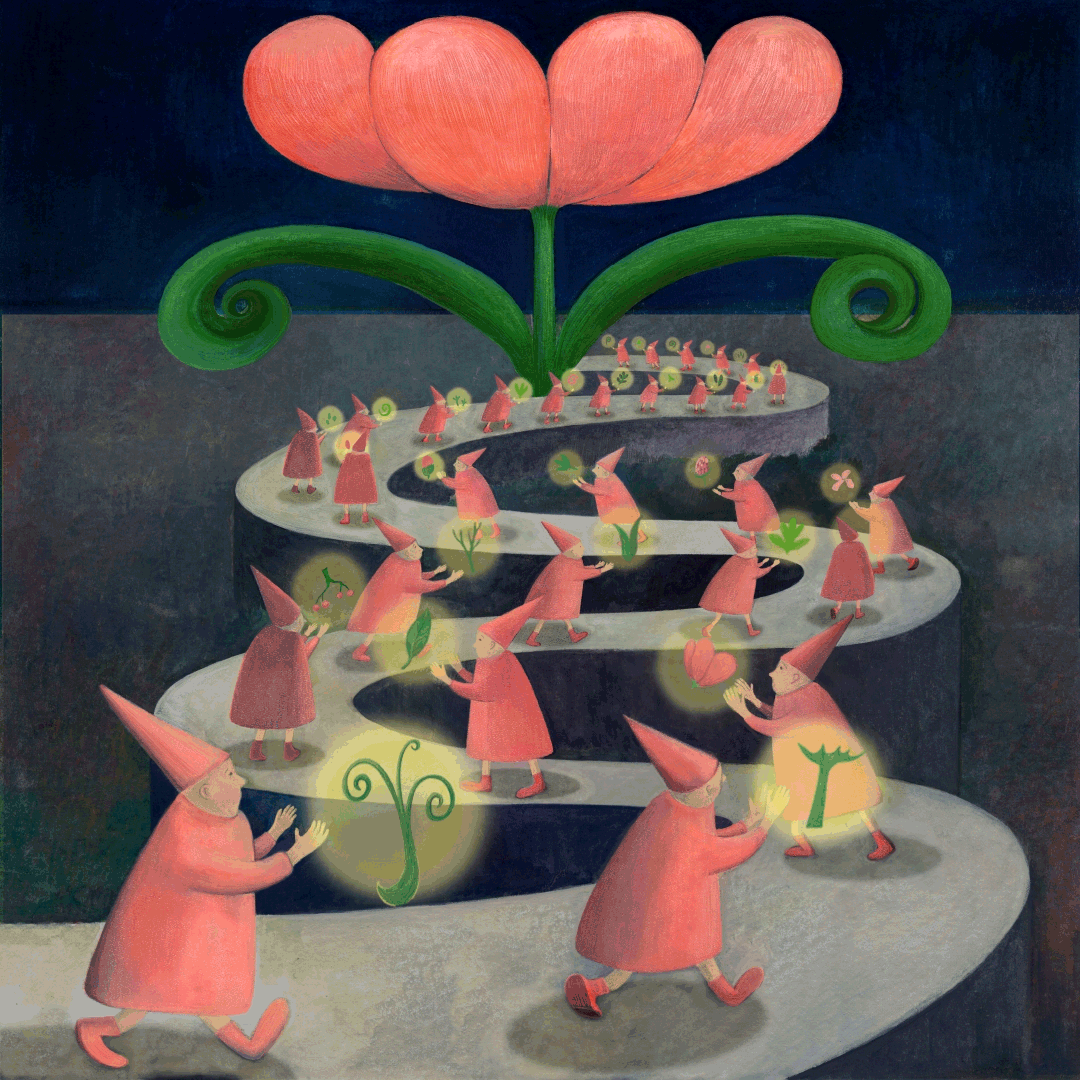
Yu-Ching is an illustrator, designer and artist educator working in Cambridge. Yu-Ching graduated from Cambridge School of Art with an MA degree in Illustration and Book Arts. She is passionate about visual storytelling and enjoys working with a mixture of digital and analogue methods.
When Yu-Ching applied to illustrate our first core value we were instantly drawn to her calming and contemplative visual language. We loved how she combines mixed media; creating works on paper and moving it through to the digital realm to add extra touches to her painterly style.
The theme of Yu-Ching’s work often touches upon state of mind, which she uses to create narratives that resonate with her audience. She spoke about how, as people, we respond to transformation – the type of transformation that we don’t always expect or understand – and how we can take these experiences, both accidental and purposeful, and use them to grow. This really resonated with our core value ‘growth is driven by ideas, opportunities and reflection’ as we felt that it touched upon the idea of growth coming to us in different ways and how we can identify, reflect and respond with a new found freedom and clarity.
We love the outcome of Yu-Ching’s commission, sharing a tale of how the thoughts and actions of individuals can work towards achieving something amazing for all.
AccessArt Value #1
Growth is driven by ideas, opportunities and reflection.
What kind of growth makes us feel stimulated and fulfilled? As individuals, what drives us to keep creating? As communities, what makes us fair, inclusive and forward-thinking?
Society is saturated with measures of growth, and as individuals we often feel the pressure to prove, map and compare our own growth in all kinds of ways. But what other kinds of growth are there that sit outside a wrapper of numbers, and that don’t rely on the assumption that a bigger number means more success?
For AccessArt, growth has been both defined and driven by ideas. Our aim is to help enable high quality visual arts teaching and learning, and we feel that can only happen through a creation, curation and sharing of ideas relating to aspects of creative making and understanding. Ideas excite us, and giving form to those ideas so that others can access them excites us even more.
Having an ear to the ground and being agile enough to both identify and act upon needs and opportunities is the next driver of AccessArt’s work. Where we see a need experienced by pupils, teachers, educators and artists, we enjoy identifying a creative solution.
Finally, through reflection: of what worked, what didn’t work, what is happening on the horizon, and what can we help steer, AccessArt is able to refine our vision of what we need to do next.
Through all these modes: ideas, opportunity and reflection, our position of sitting slightly outside and around (fill space) the users we serve helps us act with freedom and clarity, and enables us to work hard to create a product which is both relevant to and accessible by as many people as possible.
Explore our other Core Values here.
8 Values That Have Helped Shape AccessArt
In 2024 AccessArt celebrates 25 years. As a self-sustaining arts organisation (a Charity, Limited Company and Subject Association), we thought it would be timely to share the values that continue to shape AccessArt
These organisational values are important at every level. Their meaning is enriched by their context; they are the values by which we act as a team, they impact the work we deliver, and our relationships with users. They are values which not only describe the way AccessArt endeavours to exist in the world, but also describe how best creativity might be allowed to flourish in the world, and to this end we hope some of these values might resonate with you, the user, and impact upon the way you enable creativity in yourself and those around you.
To share and celebrate our ethos, we will be commissioning 8 artists to illustrate our values. Find out how to apply here.
Please share how our core values resonate with you #AccessArtCoreValues
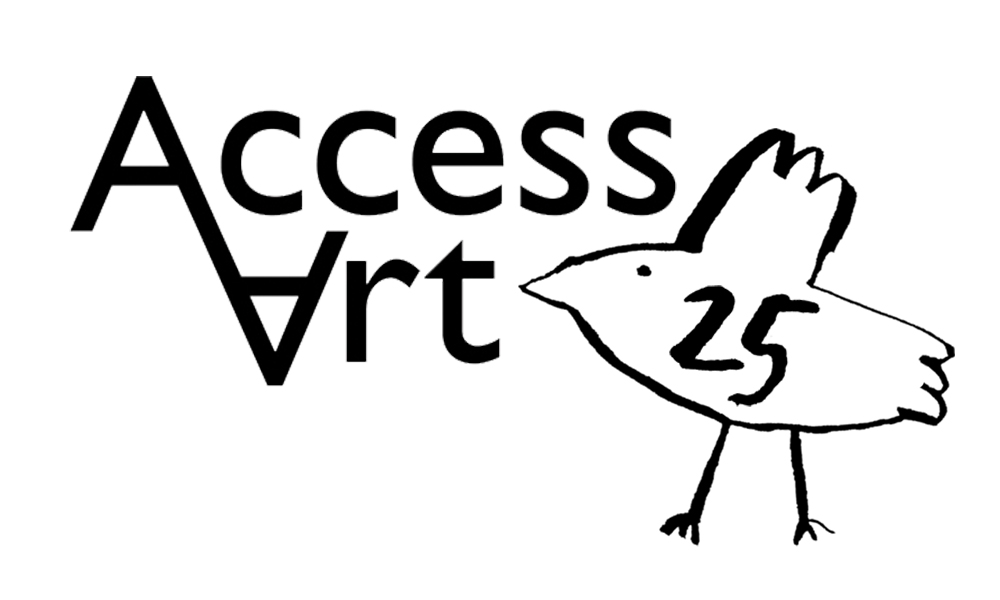
Beliefs
AccessArt Value #1: Growth is Driven by Ideas, Opportunities and Reflection
Illustrated by Yu-Ching Chiu
What kind of growth makes us feel stimulated and fulfilled? As individuals, what drives us to keep creating? As communities, what makes us fair, inclusive and forward-thinking? See & Read More
AccessArt Value #2: Enthusiasm is Infectious and We Can all Play a Role in Fuelling or Stalling the Creative Potential of Others
Illustrated by Lizzie Lovejoy
What is our individual responsibility to those around us? What do we do, to encourage or interrupt positivity? How might we enable a more curious and playful approach? See & Read More
AccessArt Value #3: Having the Confidence to Hold Ideas Lightly, Enables us to Create Space for Everyone to Reach their Potential
Illustrated by Jagoda Sadowska
How can we always aim to open out thinking so that it embraces more possibility? How can we balance structure and freedom so that we feel safe yet free? See & Read More
Actions
AccessArt Value #4: Through small acts of understanding we can enable big thinking.
Illustrated by Rachel Ng
How can we create small stepping stones of experience which enable us to explore complex ideas and experiences? See & Read More
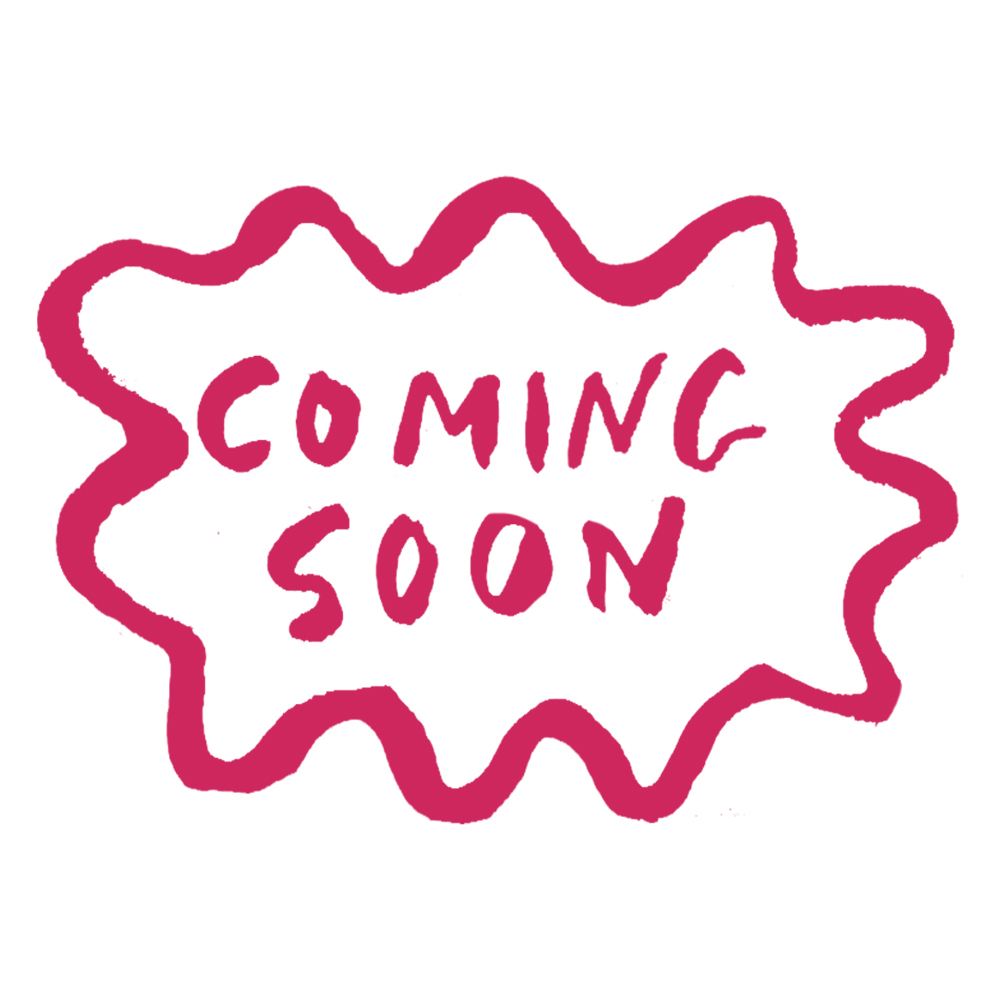
The intentions behind even the smallest actions are important. Incrementally, these intentional actions create impact.
(Call for commissioning TBC)
How can we be enabled to act with clarity? How can we avoid overwhelm and at the same time empower? How can we see every action as a jewel?
Relationships

We can be our most brave and creative self when we feel safe and valued. To help others feel valued we need to be kind.
(Call for commissioning TBC)
How can we cultivate a space in which we feel safe enough to show our true selves? How can we show compassionate understanding which enables individuals to feel understood and enabled?

We all have something to contribute which is of value to others. There is strength in shared experience which empowers us all.
(Call for commissioning TBC)
How can we learn to recognise what we have to offer to others, perhaps outside our usual sphere of influence? How can we feel supported by others in our community? How can we be energised by encounters with those experiences and ideas outside our comfort zone?

Generosity of spirit can help build a bigger, more diverse and inclusive world, bringing more opportunities and greater understanding for all.
(Call for commissioning TBC)
How can we hold ourselves less tightly, so that we feel able to share and embrace the experience of others? How might we feel safe, strong and empowered whilst being small in a very large crowd?
Share Your Outcomes
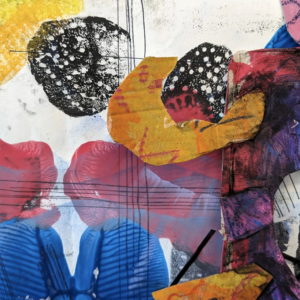
We love seeing the work you have created as a result of AccessArt resources, and just as importantly schools like to see what other schools have done. Sharing your work with us and others, ensures that pupils and teachers feel celebrated on their creative journey.
Find out how to send your outcomes
Email Your images
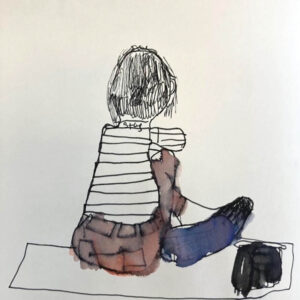
You can send us high quality images via info@accessart.org.uk email address.
Please include a short message giving us permission to use the images on our site and social media feed, and let us know how you would like the images to be credited.
tag us on social media
Tag us os on Instagram using @accessart.org.uk using the hashtags #InspiredByAccessArt
You can also join our Facebook Group AccessArt Network and share your outcomes on there.
send images via wetransfer.com
If you have more than 8 images it is usually easier to send them to us via WeTransfer.com. Please send them to morag@accessart.org.uk
Please include a short message giving us permission to use the images on our site and social media feed, and let us know how you would like the images to be credited.
The AccessArt Gallery
Find out how you can get your images featured in the AccessArt Gallery.
The AccessArt Badge
We like our members to be proud that you use our resources to inspire high quality teaching and learning in your setting. Download a badge and display it on your website or share it on your social media feed.
Right click to download to your local device.
Find More Ways to Celebrate and Share
Let’s Create Art: Project Partner
AccessArt is proud to support Let’s Create Art 2022. In its inaugural year the Let’s Create Art campaign will showcase the vital role of visual arts engagement in promoting positive wellbeing.
The campaign invites organisations and individuals to take part in visual arts activities between 19 October – 2 November.
Find out how you can join in at https://engage.org/happenings/lets-create-art/
Collaborative CPD by Art Education Experts: AccessArt, Susan Coles & Mandy Barrett + Guest Speakers
We’re really pleased to announce a new series of zoom CPD for teachers and art educators jointly coordinated by Susan Coles, Mandy Barrett (of Gomersal Primary School) and AccessArt.
The sessions will focus upon key relevant themes as faced by teachers in classrooms with the aim of building knowledge, skills and enthusiasm. In addition to presentations by Susan, Mandy and Paula Briggs from AccessArt the sessions will also be supported by key experts in the field including teachers of all key stages.
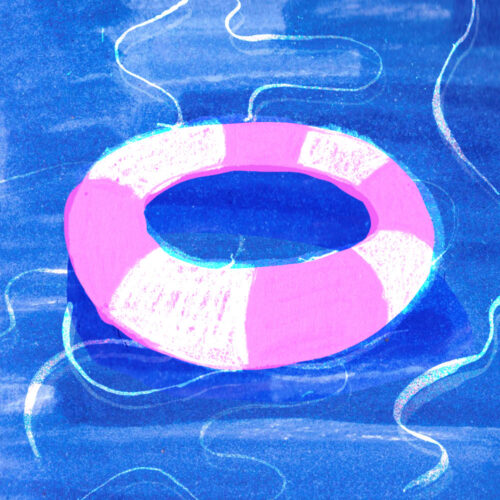
Join us and feel reassured, invigorated and inspired! See our latest CPD courses here.
Contact Rachel@accessart.org.uk
The New AccessArt Primary Curriculum for Art
AccessArt is excited to be working on a brand-new Primary Curriculum for Art to be launched in May 2022.
Following the success of the existing AccessArt Exemplar Curriculum and Progression Plan, AccessArt currently has nearly 9500 members – 70% of which are primary schools using AccessArt ethos and resources to help deliver a rich creative curriculum in the visual arts.
AccessArt has a unique model amongst providers of visual arts education resources. The charity and membership organisation work with hundreds of artist educators and teachers in the UK and overseas to build an evolving collection of high quality resources which enable open-ended creative exploration. This co-created resource bank means schools benefit from the experience of a wide range of leading practitioners in the field, whilst being curated, guided and led by the vision of Paula Briggs and the AccessArt team.
The AccessArt Primary Art Curriculum will aim to:
-
Go far beyond meeting the requirements of the current National Curriculum, enabling schools to deliver an exciting art curriculum in the here and now, but also act as a model which leads with vision and expertise to help inform future curriculum planning in England and beyond.
-
Offer schools a fully flexible scheme of work which can be followed in whole or in part.
-
Present choices for schools, and enable teachers to develop skills so they feel able to tailor the curriculum, develop their ownership, and create outcomes unique to them.
-
Be outward looking in terms of approach, activities and artists, making the curriculum fully inclusive and relevant to all pupils.
-
Encourage schools, teachers and pupils to think about WHY we teach art, as well as HOW we might do so, and vitally, to help build understanding of why art and artists are relevant to society.
-
Enable all teachers including non-specialist teachers and teachers with little experience to feel confident and happy teaching art, developing their skills and personal sense of creativity and wellbeing.
The new AccessArt Primary Curriculum for Art will be launched in May 2022 giving schools time to explore and plan before Autumn term 2022. The introduction of the new AccessArt curriculum will be supported by extensive online CPD session for schools, including suggested start points in the form of mini-curriculum which schools can utilise in the Summer term 2022 as a way to better explore what AccessArt can offer their teachers and pupils.
We look forward to keeping you updated over the next few months. Please do get in touch if you have any questions, and join our facebook group at
www.facebook.com/groups/accessartnetwork
Paula Briggs, Creative Director
January 2022
Creative Pedagogy & Pathways: The Wish List
We are all passionate about the importance of art education, and we all represent different audiences. To help explore how we can help support each other to help create a more sustained pipeline from early years through to life long learning, and to build new links within the pipeline, we need to consider our Wish List. The audiences we work with do not exist in a vacuum – they are part of a larger picture. By sharing our wish lists we might be able to see where we can better support and learn from each other.
Thinking in particular about the individuals, organisations and institutions around you, what would you like to ask of them? Is there a type of organisation you have never had experience of collaborating with, but would like to.
Some examples:
-
You are a secondary school teacher. Can you describe the traits of Yr 7 pupils you would love to inherit from your feeder primary school.
-
You work in HE. You’ve never worked with EYFS teachers, or children that age, but you’d quite like to see what goes on in early years education to better understand the other end of the educational chain.
-
You work in FE. What would you like to ask GCSE and A level teachers to develop – in terms of skills in Foundation Course Students?
-
You work in a creative industry. Which skills would you like to elevate in primary and secondary schools?
-
You are a practising artist/designer. Think back to your 7 year old self. What gift list would you wish on your 7 year old self? On your 85 year old self?
-
There is an issue which you come up against time and time again. What is it and how can your wish list fix it? Who are you asking for help?
How to Share Your Wish List
-
Teachers, Educators, Policy Makers, Stake Holders, Parents, Artists and Students – We invite EVERYONE to send us your wish list, by email, and we will share as many of those lists as we can via the AccessArt website.
Collaboratively Discovering Common Ground
By Dr Judy Thomas
This response was written after the first meeting of the Creative Pedagogy & Pathways Group
Bakhtin (1984) promoted pedagogies that facilitate dialogic engagement; his ‘Chronotype’ theory suggests time and space is inherent in narrative.
Our narrative, and that of our learners, has shifted dramatically over the past year; we have embraced new virtual spaces that present us fresh opportunities. The online environment scaffolds contemporary possibilities for connection and dialogue in ways previously not considered. Virtual adaptation has enabled us to come together and create new freedoms to positively learn from one another. This unites a divergent multiplicity, where we can actively, more fluently, share dialogue, in ways previously not so accessible. We can exchange ideas and create new, beneficial learning spaces that help us collaboratively discover common ground and navigate challenges.
We are stronger together and the promise of this dialogue is exciting. By applying online, dialogic approaches to learning, we can cross boundaries through beneficial zones of potentiality. The overwhelming excuses for being insular no longer exist; we can cross-sectors to collectively explore creative spaces to reflect, question, challenge, develop, innovate, and inspire. This dialogue can stimulate change and positively create wider access to art and future creativity.
Bakhtin, M (1981) The Dialogic Imagination in Ehre, Milton. Poetics Today, vol. 5, no. 1, 1984, pp. 172–177. JSTOR, www.jstor.org/stable/1772435. (Accessed 16 May 2021).
Cohen, Tom. “The Ideology of Dialogue: The Bakhtin/De Man (Dis)Connection.” Cultural Critique, no. 33, 1996, pp. 41–86. JSTOR, www.jstor.org/stable/1354387. Accessed 16 May 2021.
Oxford Reference (2021) “Chronotope” Available at: https://www.oxfordreference.com/view/10.1093/oi/authority.20110803095611483 (Accessed 16 May 2021).
Rule, P (2011) Bakhtin and Freire: Dialogue, dialectic and boundary learning, Educational Philosophy and Theory, 43:9, 924-942, DOI: 10.1111/j.1469-5812.2009.00606.x (Accessed 16 May 2021).
AccessArt Explores Shakespeare
Are you an Upper KS2 or Lower KS3 teacher planning on studying Shakespeare as part of your English Literature curriculum? If so, AccessArt needs your help!
We are thrilled to announce the launch of a brand new project that links the visual arts with Shakespeare – and we are looking for schools to take part in the project pilot to help us gather evidence for a series of inspirational resources that explore new ways to study Macbeth, Romeo & Juliet and A Midsummer Night’s Dream.
The focus of the project delivery will be through visual arts sessions, but with strong links to aspects of the literacy curriculum such as knowledge and comprehension of language, reconsigning themes, and comparing characters when discussing dramatic literature.
What do you need to do?
- Let us know if you would like to take part (see details at bottom of the page)
- Be able to deliver a short series of visual arts activities, pre-planned by AccessArt, that explore one of the plays listed above during the Autumn term 2021 or Spring term 2022.
- Come along to a drop-in Zoom session/s where we will be providing practical demonstrations of some of the activities that support the project delivery
- Document the activities taking place (preferably with a colleague to assist) and send the named and captioned photos to us
- AccessArt will then pull all the evidence together to create a series of Shakespeare resources on the website which we can share with our wider UK and international teacher and artist community
Interested? Let us know! Please email rachel@accessart.org.uk answering the following questions:
- Why you would like to take part in the project and why it appeals to you
- What Key Stage the participating children would be
- What your play preference is out of Macbeth, Romeo and Juliet or A Midsummer Night’s Dream
We are looking for approximately 5 schools to take part in this initial pilot. A full project breakdown will be sent to all participating schools and the pre planned sessions will be made available by June 30th
We look forward to hearing from you!
Ethos: Learning From Participants
Reciprocal Relationships
By Professor Samantha Broadhead
This response was written after the first meeting of the Creative Pedagogy & Pathways Group
“I think it is really important that those who believe in equitable access to the arts should work together. However, people from different sectors, institutions and organisations are working in art-silos. We need to lift our heads out of our own silo and talk to others who are trying to do the same thing.
I totally agree that differences in language, experience and context are elements that can impede conversations carrying on. I worry that we are sometimes talking to ourselves and not taking enough time to listen to and ask questions of others.
I would be interested in having a conversation with someone teaching art in a school and finding out what we have in common and how we could act together. This would need to be a reciprocal relationship. Maybe we need some one-to-one or small group meetings to build this understanding. I have to say that I feel personally excluded from a lot of larger discussions because they tend to focus on school curricula, when we could also be asking: how does this work in adult and community education? Or how does this work in further education or HE? How does community arts contribute to the debate?
Maybe a way forward is to start facilitating cross-sector sessions which are about finding commonalities, asking questions and looking outwards? Then we may understand each other’s values, priorities, hopes and fears. I can imagine how all the interested arts groups could work together to the benefit of everyone, but I think it needs graft and attention and persistence and leadership.”
Plain English and a Realistic Connection Between Classrooms and Pedagogical Discussion
By Clare Boreham
“I feel that what happens up high in government and Ofsted can become very mistranslated on the ground by SLTs and subjects leads trying to make sense of what they’re supposed to be doing and how. I’ve noticed recently that few young teachers have a great deal of confidence in Art themselves and schools try to use the same pedagogical approaches as in other subjects. In practise, I’ve sometimes felt Art is closer to PE at times. I also feel that what some people in academia think is happening on the chalk face, may not be the case everywhere.
This is why I personally think the visual, easily accessible ‘projects’ AccessArt has, mostly devised by artists, work so very well in schools. It’s not bogged down with learning intentions and success criteria. Or a formulaic pedagogy.
During the discussion, I was glad to hear passionate plea made that ordinary teachers are involved in this group; this is very important. Some language used by academics can also quite abstract. If we are going to have any impact anywhere, on the chalk face, plain english needs to be used. (I’m aware though, that when I talk about ASD, it’s also sometimes very abstract to the uninitiated! So it’s easily done.)
I think one of the issues with the current curriculum is there is so little guidance for Art. Which was a wonderful open ended opportunity, but I feel subconsciously meant it seemed less important in some schools, besides the very packed history curriculum for example, and non specialist Art leads weren’t sure what to do. I have an Art degree and had taught for more than 10 years and I struggled!
Initially I was asked to come up with art units that helped to deliver the enormous amount of history and geography, as apparently many schools were taking that approach. I had to spend time researching my gut feeling that this was wasn’t the right approach for all units. I feel like I’ve had to say ‘No’ an awful lot over the last few years. And spend a lot of time solving the conundrum of what could be happening instead. This is still ongoing!
A little while ago I saw a question in a forum; “I’ve been asked to do a unit on proportion for Y3 linked to Charlotte’s Web…” I feel some Art curriculum leaders have to spend a lot of time doing mental gymnastics. And I think about the children on the other end; how much engagement is a top down formulaic topic actually going to have? A happy child will learn…
My husband is an architect and sometimes teaches second years at the local University. He’s noticed a gradual decline in creative innovation and confidence in the last few years. In terms of creative industries, they’re very much an important one to think about. Practical critical thinking and confident creativity is an incredibly valuable skill that we do risk losing workout risk taking, innovative, evolving approaches to Art Education.”
Any opinions expressed in this communication are personal and do not necessarily represent the position of Benton Dene School in any way
How Can We Evidence Development of Imagination & Creativity
By Paul Carney
This response was written after the first meeting of the Creative Pedagogy & Pathways Group
“A thought came to me in a debate last night. Everyone is obsessed with measuring tangibles – knowledge and skills progression, but how can we evidence the development of imagination and creativity?
What would that look like and would it make a good focus for our project?
It would highlight what is being missed, what is being lost and is the antithesis of what is being done at present.”
Please add your comments below if you would like to contribute to the debate.
Backbones & Autonomy
By Dr Helen Burns
This response was written after the first meeting of the Creative Pedagogy & Pathways Group
Strengthen our backbone.
“We are all in our own worlds, busily contending with trying to survive and do a good job for people. We don’t get time to think about the big picture or about how we have come to this. I think arts ed practitioners need some kind of CPD which helps us to understand and be able to articulate the context for our work, theoretically and coherently. I think this would need to include a historical perspective of arts in education. This would go right back to Plato and Aristotle and to dualistic ideas which polarise thinking into academic/intellectual as opposed to sensory activities/things we do with our hands – these ideas pervade into todays education system and de-value art.
We should also look at historical, political agendas in relation to arts education and of course, at neoliberalism and how this shapes and negates art education. We then need to look at alternate ways forward. This would include strengthening understanding of a cognitive and metacognitive perspective of the value of art experience (Eisner, Efland etc.). I think we should also look again at imagination and creativity because a lot of what is said about these has become quite rhetorical – with imagination barely understood really. What does this imply for pedagogy (Dewey, Atkinson, Greene etc.). That’s how I would do this anyway – and within a format where practitioners are creatively constructing their own overview/articulation/model…perhaps as an artwork, from the information provided (I’ve done something like this before, where practitioners constructed a map/image as we went through the ideas). I like your Russian doll idea (I’m a collector)…it’s like building a russian doll where you have put together and related layers of knowledge, to make an intrinsically strong piece of thinking, which has real integrity because it is well-informed, related to your own experience and therefore, you have strong belief in it.
Enabling people to develop autonomy, in and through art.
I imagine some kind of very light touch scheme, which provides just enough structure to support people in school/community settings to set up a project which does not have to comply with official agendas. This is inspired by Keri Facer, who talks about small, grass roots projects as a means of combatting neo-liberal capitalism which is the source of climate emergency – you can’t fight from within the system – you have to find another way. We need to help people find other ways. Other ways to be free to do art but through this, ways to be free to think and to have personal and democratic agency.
Practically, I imagine offering ‘start up’ workshops which equip people to get projects going. Offering help with the project design. Being able to offer a small amount of money for the project, with access to artists, resources etc. Preferably being able to do some research around these projects – but doing research rather than asking for reports etc. There could be a blog or something which connects the projects.
I think that one part of the support should include enabling people to develop an understanding of metacognition, through art experiences, about imagination, creativity and voice/agency.”
Please add your comments below if you would like to contribute to the debate.
Catch-on not Catch-up
Fearful For The “Lost Generation” Existing In An Anxious Society Who Need to “Catch-Up”?
Breath. We can step outside the “fear breeds anxiety breeds more fear and more anxiety” cycle.

We have a powerful tool at our disposal to help heal, build confidence and empower. Our own Creativity.
Let’s not perpetuate the “lost generation” myth. These children are unique but not lost. The more we sell the message of the lost generation, the more we perpetuate fear and anxiety. Instead of creating a self-fulfilling prophecy of the “lost generation” let’s be brave and create a “nourished generation”.
We have fingers, heads and hearts. We have senses and emotions. We have imaginations. This generation does not need to catch-up to where they would have been – that is going backwards, instead they need to be enabled to leap forwards through hands, heads and hearts and explore their place in the world, supported by families, teachers and schools who tell them it is safe to do so. Let’s make primary schools a place where creativity can be supported and nourished and children can be enabled to discover their ability to transform the world about them.
We are more creative as a species than we are currently led to believe. Intrinsically, inherently, creative. We need only look back at history to see that, and we value it as an adult skill and yet still many teachers in many schools struggle to find time to invest in the creativity of their pupils without huge effort or apology.
We do not need to worry that it is an either OR scenario. Enabling these children to spend time exploring their creativity will NOT detract from their ability to succeed in “academic subjects” (and that term is a whole other conversation). Quite the opposite; schools where creativity flourishes demonstrate that motivation, ownership of learning and outcomes in other subject areas flourish too. This is not fuzzy thinking where we create a cossetted world full of play and fun (though why not?). Creative thought and action is hard work; you have to be brave to explore, think really hard, learn new skills, battle with materials, take risks, put yourself on the line, figure out what you think, express yourself, share with others, change the world. We’re talking about enabling people to be brave, positive, productive, and act for the benefit of society as well as for the individual. Don’t worry, it won’t be easy. Finger painting isn’t all fun you know.
Let’s switch the message we are telling our children. We are stronger than we perhaps think. If we create a dialogue around this generation of loss, we make them less then. Instead let’s use the power we all have – our creativity – to climb back up. Not catch-up – but catch-on.
So, let’s step back, take a breath, and create a nourished generation, lavished with time to draw, paint, print, make, build, photograph, write, dance, make music and most all – be empowered to explore the world and produce our own creative response. Teachers too.
Thank you to all the teachers in school who know how important creativity is to pupils, and who work long and hard to provide stimulating creative opportunities for their pupils 🙂
